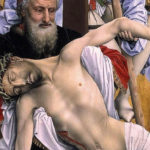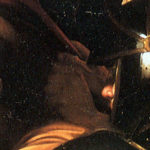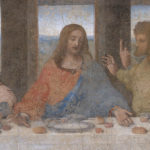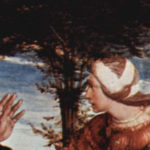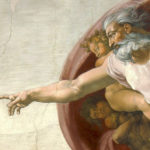December 28, 2019
Year 4, Day 362
Approaching the end of about twenty years writing a Page for each day to cover a four years period, I feel the urge to accent the large concept of Christian culture projected into the earth cultures of the world. It is a subject addressed just two days past in this series – and on other days through four years of: TODAY’S PAGE. The projection is so large it needs to be underlined in thought and practice, so to contribute to the effective witness and model of Christianity for holistic life. We hope to find the most straightforward and clear way to present the point advanced here. The discussion begins with the assertion that the Christian and the atheist ought to… Read more
November 21, 2019
Year 4, Day 325
This Page goes behind the evidence, behind the actions. We want to address reality, and we would like to find a modus operandi that grows out of the discussion of the stew of man’s making in local and national politics in 2012. At this writing we have just concluded a long period of political maneuvering, debate advertising, distortion and some truth related to the election of the President of the United States and numerous other candidates across the nation. The result of the election is that Barack Obama was reelected President, and the Congress was elected with incumbents and new candidates making up much the same pattern that has stalled virtually all legislation of import for at least two years. … Read more
November 19, 2019
Year 4, Day 323
One of my interests is fed by taking for a year or so this or that publication, magazines and newspapers that I believe are excellent in the context in which they are designed, so to discover the various ways in which thoughtful writers and publishers advance the objectives of their publications. In the digital age these have survived because they have an audience, and they advance their purpose to help their readers improve themselves in accents made by the publications. The publications have included a number of titles: The Wall Street Journal, Time, The Atlantic, Smithsonian, AARP, local newspapers, and others in a spectrum of interests including business, archaeology, academic journals (especially in philosophic and theological interests) and the list… Read more
September 11, 2019
Year 4, Day 254
This page is being written in 2011, and edited in 2018. On this date in 2001, clever and vicious terrorists flew high-jacked airplanes into the Twin Towers in downtown New York City. Soon after the first plane struck the first tower, I was following the on-site human responses on television, when I saw the second plane circle around and strike the second tower. The second tower collapsed before the first one fell. The devastation was unbelievable, and the loss of life was in the vicinity of 3,000 persons. One is unsure what the collateral damages have been. In the hours of this holocaust, another plane, likely bound for the White House in Washington, D. C. was aborted by brave persons… Read more
August 15, 2019
Year 4, Day 227
We likely agree that if there is God, he has the first and last words relating to all things – in life and in death. If we do not believe in God, we tend toward creating meaning from nature, and press it on the population. Scripture informs us that we are incapable of making his evaluations/judgments, so we adapt to the context he offers, either human or divine. Democratic society has decided on freedom of religion which includes not only the peaceful pursuit of faith by individuals, either alone or in concert with other individuals, or the right to avoid any religious faith. Faith is commonly treated by secularists as cultic and superstitious – without substance for society. This leads… Read more
July 28, 2019
Year 4, Day 209
This date was begun in Volume 1 with the birth story of my firstborn, and the event’s effect on me. That day I felt proud to be a human being, by a deeper concern for others, especially in those days for my wife and our new baby. The beginnings were difficult in the premature birth of our tiny daughter. In retrospect the experience was good for all, and certainly marked my feeling of being grown-up. I became a man, not a boy, a lad, or an adolescent. (Some things we identify as adult ought to be termed adolescent.) In Volume 2 for this date there are stories of marriage and children somewhat surreal in the telling. In Volume 3 there… Read more
May 7, 2019
Year 4, Day 127
Whittaker Chambers penned a long book (800 pages) to his children and the world, published in 1952. I still have my copy from Christmas, 1952, and will pass it on to my great-grandson who will inherit what remains of my materials from a long life of teaching and ministry. Paragraphs from it were so gripping that even with the growing forgetfulness of old age I remember the following one almost as I remember Scripture passages. I quickly recovered the page I wanted (Page 6) in that I remembered the name of the man in the piece, sixty years after reading Chambers – a name quite unfamiliar currently to an American ear. Therein is an important concept in regard to the… Read more
April 22, 2019
Year 4, Day 112
Virtually everyone has a religion even if it is negative (nihilism), which is to say they have no god, but hold something relating to a spiritual affect – perhaps nothing more than meditation or self-orientation. In this demanding spiritual or psychological motivation the thinking person seeks a religion (selfie) that he or she thinks is true, even undefiled. This is understood, by way of humanizing to the fact that every person has a body. Some bodies are healthy, and some are distorted, diseased, perhaps will have only short lives because of the lack of health. Biblical writers want readers to know that there is a healthy religion that will carry the believer through to a desired life end related to… Read more
March 22, 2019
Year 4, Day 81
Andrew A. Rooney (Andy to everyone who knew him) was a wordsmith. That is to say his life and career was taken up with writing and speaking. He had a love-affair with words that began when he was a kid in high school when he won a prize for an essay. It was the high point of his formal education, and portended his reporting of the experiences he had in Europe during World War II, and learning from other effective reporters. The war gave him (as it did for other serious persons) a different look on life than would have been the case otherwise. He became something of a curmudgeon, but a friendly one that was visited with self-criticism. When… Read more
March 6, 2019
Year 4, Day 65
The Bible has layered meaning which means it is to be understood first as history. This is the context used by archaeologists. Does the narrative stand up well to what is known in the history of mankind? It is important that we gain this balance in order to interpret the spiritual meaning. Spiritual meaning emerges from the parables of truth in experience, as it was used by the prophets, but more clearly by Jesus. Jesus did not violate earth’s logic based on nature’s evidences, sometimes called Greek logic. The evidence is verifiable, and is basic to what we now identify as Scientific. It is so striking and useful for earth knowledge that some persons presume it is the only pattern… Read more


